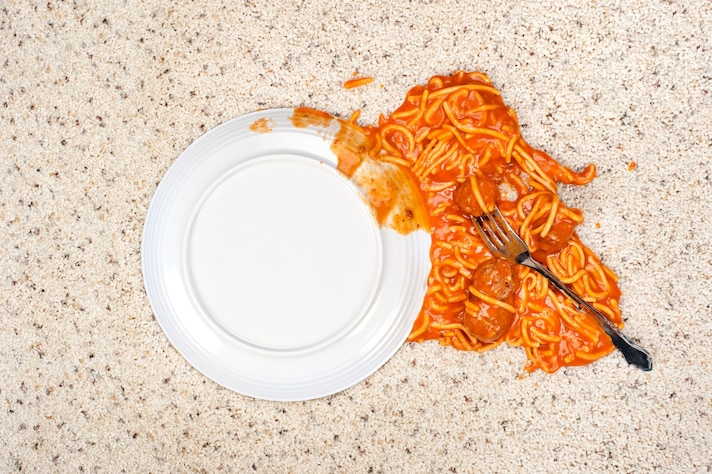
If you've ever had to throw out your last piece of candy or chicken because it fell then, you most likely made that decision after thinking briefly about the safety of consuming it.
This is where the 5-second rule comes in. In ordinary terms, the popular rule states that food that has fallen on the ground is safe to eat as long as it's picked within 5 seconds.
In scientific terms, the rule proposes that if you grab the food fast enough from a contaminated surface, dangerous microbes on such a surface won't have enough time to transfer onto your food.
But, experts say this rule is nothing but a MYTH.
You must consider the fact that any food that drops onto a contaminated surface will pick up some microbes, regardless of how long it stayed on the surface. Unfortunately, you can't rid such a food item of the microbes like you can for other objects.

However, this remains widely debated on the grounds that some environments and surfaces are safer than others. Not to mention, there are also some foods that may be safer to eat after being dropped.
Now, let's turn to expert findings after a research study that put the 5-second rule to a test. The study was conducted by Rutgers researchers and it states that moisture, the type of surface, and contact time on the ground all contribute to the degree of cross-contamination.
The study also projects that certain types of foods fare better than others when dropped on the floor. And the type of surface matters, too. A summary of important findings from the research go thus:
The greater the moisture content of a food item, the more easily it gets contaminated when dropped on any surface.
As for the surface, researchers discovered that carpet has a very low transfer rate while tile, stainless steel, and wood have much higher transfer rates.
In some cases, the transfer of bacteria begins in under 1 second!

Scientists have concluded that the 5 second rule is just a myth. However, the transfer of microbes into food from a contaminated surface is influenced by different factors, including water content and the type of surface. In other words, your safest bet to avoid food poisoning is to throw out food that’s fallen on the floor.
;Resize,width=767;)
